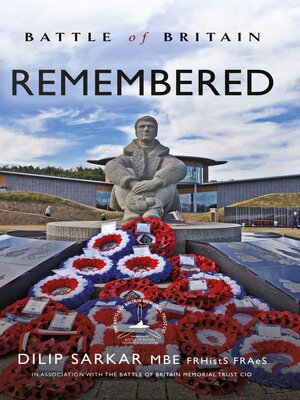
Sign up to save your library
With an OverDrive account, you can save your favorite libraries for at-a-glance information about availability. Find out more about OverDrive accounts.
Find this title in Libby, the library reading app by OverDrive.



Search for a digital library with this title
Title found at these libraries:
| Library Name | Distance |
|---|---|
| Loading... |
The summer of 1940 marked a pivotal moment in the Second World War. Following the Fall of France, Britain and the Commonwealth stood alone against the threat of Nazi Germany. With the prospect of invasion looming and Hitler’s forces undefeated, the outlook appeared bleak. As the new Prime Minister, Winston Churchill predicted, "the Battle of Britain is about to begin."
Under the leadership of Reichmarshall Hermann Göring, the Luftwaffe sought to destroy the RAF and secure aerial supremacy, but Fighter Command’s young aircrew—immortalised by Churchill as "The Few"—resisted with great determination. Over sixteen weeks, from 10 July to 31 October 1940, nearly 3,000 aircrew fought, with 544 losing their lives. Their sacrifice was supported by the RAF, Allied forces, and the civilian population, all playing vital roles in the struggle.
In his eight-volume series, Dilip Sarkar MBE, FRHistS, explores the Battle of Britain with a meticulous evidence-based approach. Drawing on primary sources, Sarkar challenges popular narratives while providing comprehensive day-by-day accounts of every raid, squadron action, and strategic operation, including Bomber and Coastal Command activities and the impact on the Home Front. Produced in collaboration with the Battle of Britain Memorial Trust, this series offers the most up-to-date research available.
This final volume focuses on how the Battle of Britain has been commemorated over time and examines its cultural and historical significance. Concluding with a comprehensive directory of memorials, museums, and sites related to the battle, the book serves as an essential guide for those interested in exploring these locations and connecting with the dramatic events of 1940.
Under the leadership of Reichmarshall Hermann Göring, the Luftwaffe sought to destroy the RAF and secure aerial supremacy, but Fighter Command’s young aircrew—immortalised by Churchill as "The Few"—resisted with great determination. Over sixteen weeks, from 10 July to 31 October 1940, nearly 3,000 aircrew fought, with 544 losing their lives. Their sacrifice was supported by the RAF, Allied forces, and the civilian population, all playing vital roles in the struggle.
In his eight-volume series, Dilip Sarkar MBE, FRHistS, explores the Battle of Britain with a meticulous evidence-based approach. Drawing on primary sources, Sarkar challenges popular narratives while providing comprehensive day-by-day accounts of every raid, squadron action, and strategic operation, including Bomber and Coastal Command activities and the impact on the Home Front. Produced in collaboration with the Battle of Britain Memorial Trust, this series offers the most up-to-date research available.
This final volume focuses on how the Battle of Britain has been commemorated over time and examines its cultural and historical significance. Concluding with a comprehensive directory of memorials, museums, and sites related to the battle, the book serves as an essential guide for those interested in exploring these locations and connecting with the dramatic events of 1940.







